Braking
Braking
Stopping When You Need To Stop
Beyond tyres, braking is one of the most critical areas for improvement on your track car. The factory components are designed to satisfy a compromise of comfort, noise, performance and longevity and even on high performance sports models the standard equipment can quickly become overwhelmed by the intensity of track driving.
Big Brake Kits
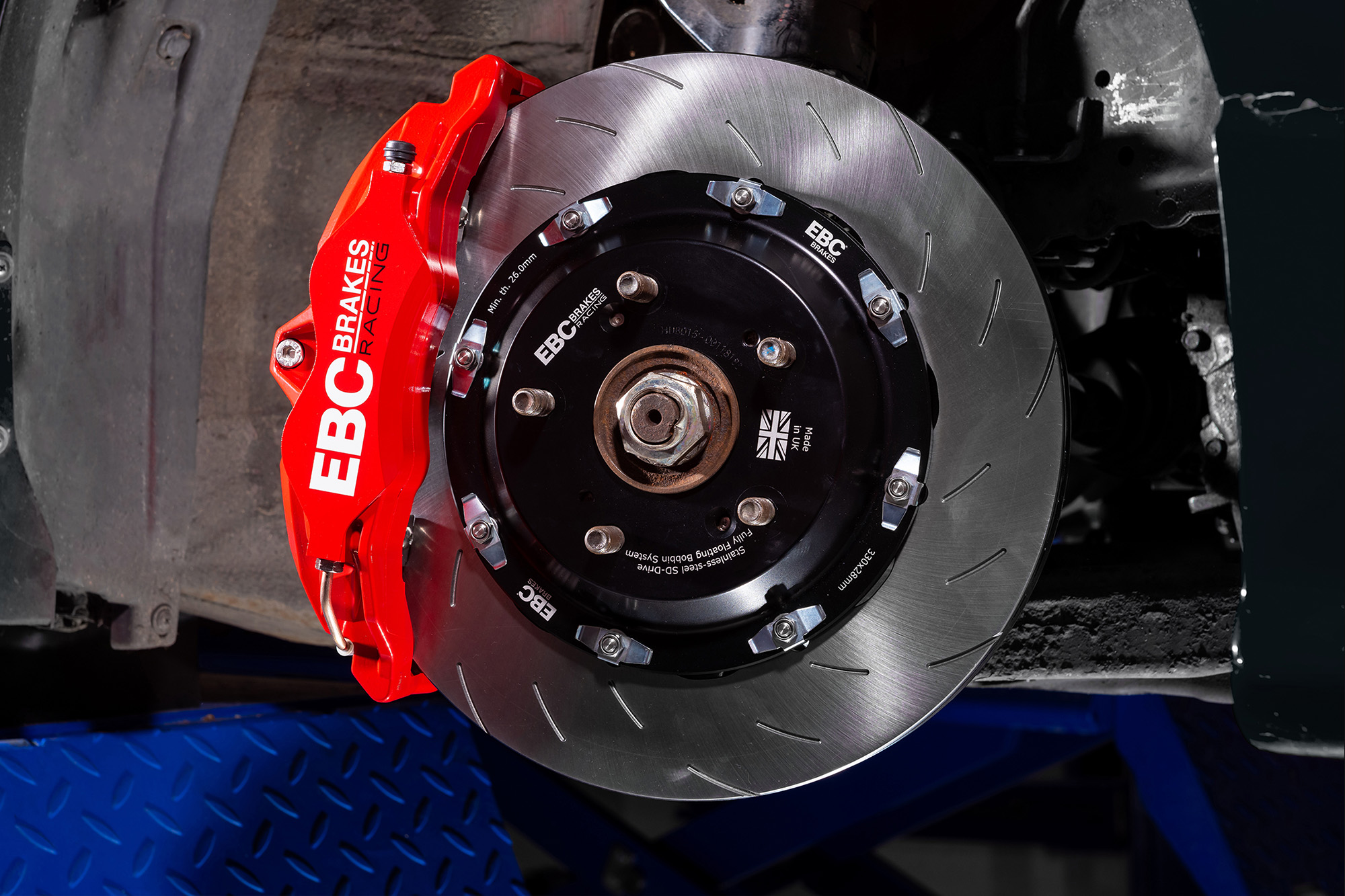
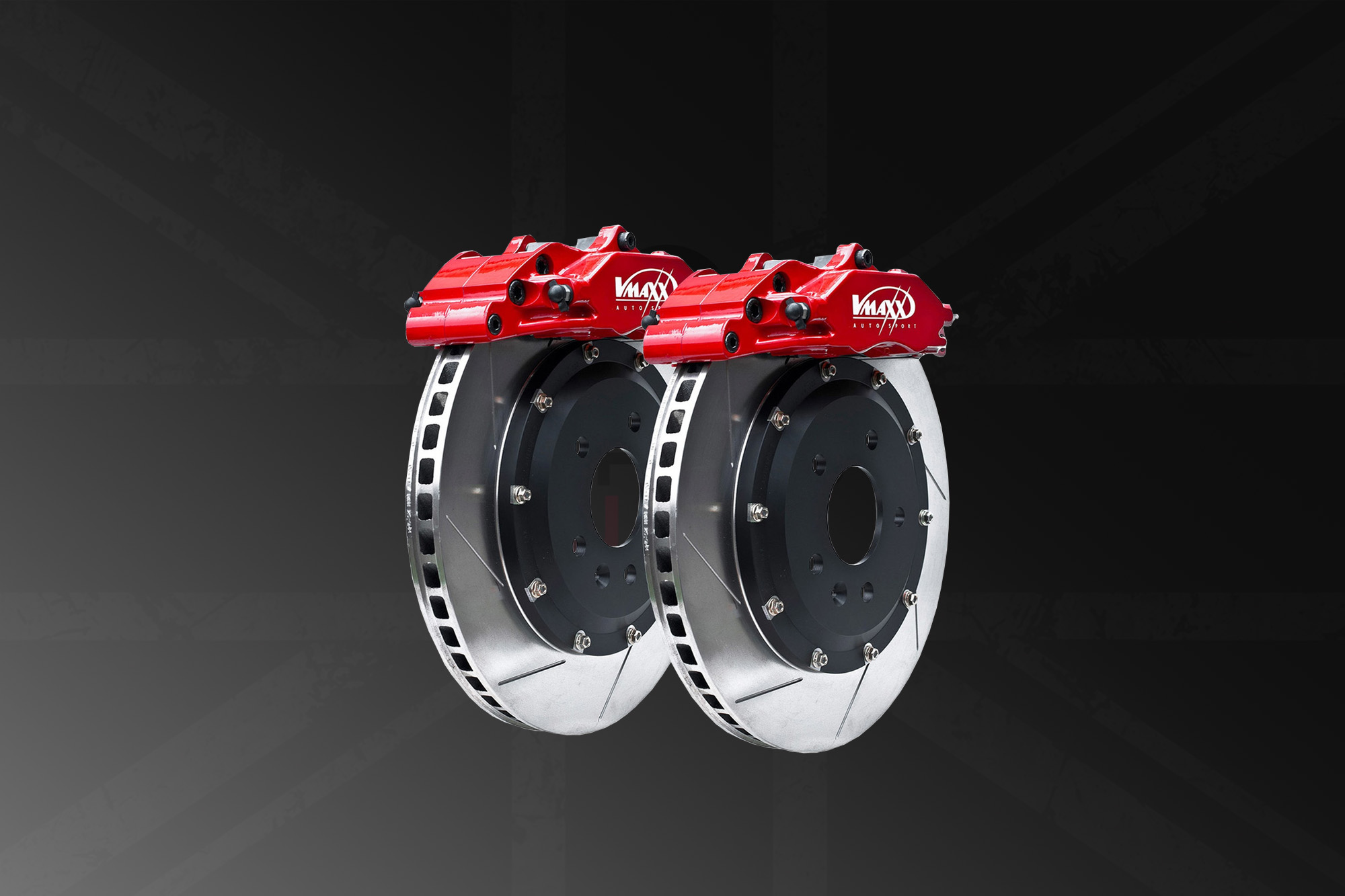
Big brake kits are the ultimate in performance stopping solutions, often derived from high specification competition parts, they completely replace the factory components with equipment aimed solely at achieving maximum, reliable and repeatable braking performance. For outright braking performance, bigger is always better and as such big brake kits feature the largest possible components capable of being housed inside the wheels of the car. Typically, kits will comprise of large lightweight multi-piston brake calipers, huge (often 2-piece) brake discs and appropriate performance brake pads as well as corresponding brake lines and fluid. It is also worth noting that, for certain applications, increased size brake discs are offered as a standalone upgrade usually where a car is fitted with a 4 or 6 piston caliper as standard. In this instance a 2-piece, larger diameter disc coupled with an adapter bracket, or elongated bolts and spacers can be a fantastic solution to increased braking performance.
Whilst competition standard braking systems have started to filter down through high-end, factory performance cars it’s unusual to see 6 or 8 piston calipers fitted as standard to the types of machinery you might find taking part on a track day. They are, however, a regular occurrence in big brake kits where the larger the disc the greater the number of pistons in the caliper, this allows the braking force to be distributed as evenly as possible. Often the calipers will be of lightweight, monobloc design keeping unsprung weight to a minimum and implementing the maximum possible size within the tight tolerances of the wheel and suspension. Responsible for housing the brake pads, a larger caliper will allow a bigger brake pad resulting in greater performance due to an increased surface area.
A large percentage of the increased performance on offer from big brake kits can be accredited to the upgraded brake disc – the bigger the diameter of the disc the greater its ability to absorb heat which is particularly import when it comes to track driving and the repeated hard and heavy braking zones. The drawback with bigger brake discs is increased weight, however, typically a 2-piece design is used to combat this meaning that the central ‘bell’ or hat of the disc is a separate part which will typically be machined from a lighter weight material to help offset the weight of the outer disc or ‘rotor’. This 2-piece design is bolted together in either a fixed or fully floating fashion and provides significant improvements in heat dissipation. Often there will be the option to have disc face drilled, grooved or slotted to help degas the space between the brake disc and pad improving initial bite and reducing brake fade but the biggest performance enhancement comes from directional/handed cooling vents/veins increasing airflow through the disc assembly.
Our recommend brands for big brake upgrades
Brake Calipers


Upgrading your brake calipers can allow you to take advantage of a number of benefits. Typically factory calipers on smaller cars will have a lesser specification, so those of you looking to upgrade your hot hatch for track might consider brake calipers as a worthwhile upgrade. The aim of upgrading your calipers would usually be to increase brake pad size/surface area as well as the number of pistons acting on those pads and also reducing unsprung weight, it may also open up better or a greater range of brake pad compounds compared to what’s available for the standard setup.
The most likely scenario for a brake caliper upgrade is to move away from a single pot, sliding design often found on smaller hot hatches. Such calipers act on the brakes from the inboard side alone relying on sliding pins to balance the force to the outside pad, whilst in serviceable condition such calipers are ample for road use, the extremes of track use will expose the weaknesses of this design. Heavy use and increased brake temperatures can lead to uneven brake pad wear with all the force acting on the inboard pads and potentially sticking sliders. Choosing to upgrade to a 4-pot caliper would negate these issues and unlock the benefits mentioned above, this could be in the form of bespoke design, direct fit calipers engineered for a specific application or an adapter bracket and caliper kit which will allow fitment of a universal caliper to multiple models.
Our recommend brands for brake caliper upgrades
Brake Discs

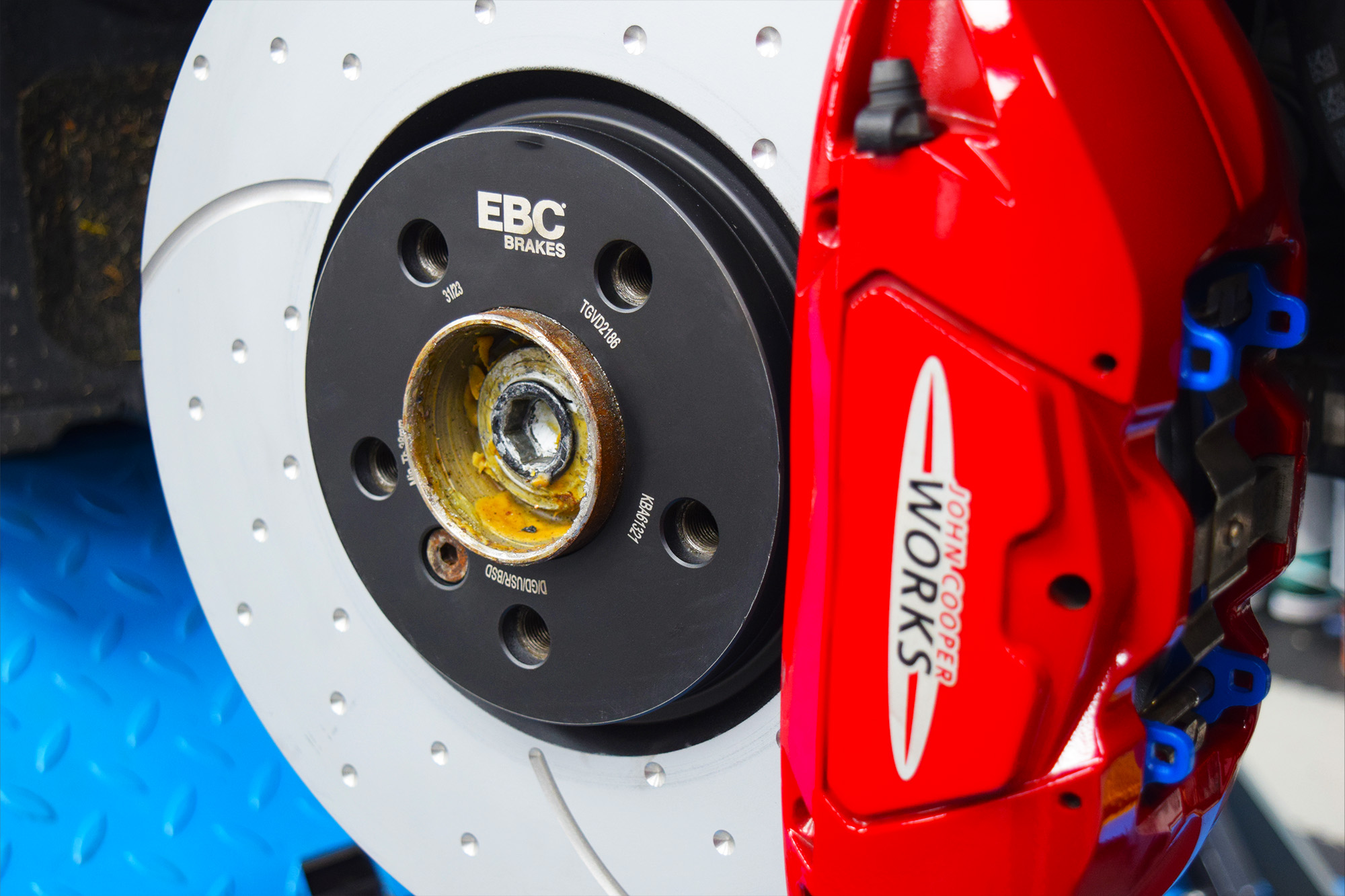
Upgraded brake discs are one of the more easily achieved performance modifications for your track car, particularly if the standard brakes are worn and need replacing. Starting with direct-fit discs which are of the same dimensions as the original, enhanced performance comes in the form of an improved surface design where aftermarket options include drilled, grooved and slotted disc faces. With these products you benefit from degassing and deglazing of the brake pads as they reach extreme temperatures but also increased resistance to brake fade whilst retaining the ease of fitment inherent in components of factory dimensions. Typically, upgraded discs will be offered with a specialist surface coating that not only aid the ‘bedding-in’ of new pads to new discs but also offer corrosion resistance for parts of the disc not covered by the swept area of the brake pads.
In addition to upgrading the disc surface it is also possible to increase its size – put simply the bigger the brake disc the better the performance. A larger disc has more surface area for pad engagement and to dissipate heat, it also results in more leverage when the caliper clamps down on the outside edge. Implementation of this kind of upgrade can be achieved in several ways including swapping the original equipment for that of a higher model with a better specification brakes or installation of specialist aftermarket brake discs which often come as a kit incorporating the necessary hardware. Usually, aftermarket kits will feature high performance, 2-piece brake discs for an even more significant increase in stopping power, use of such a kit provides competition levels of braking performance whilst retaining the factory calipers. Installing enlarged brake discs on your car will require supporting modifications such as brake caliper adapters or spacers and will also be limited by the diameter of wheel being used.
Beyond this brake disc upgrades become more dedicated, race-derived products with an increased cost to reflect the more complex design or material utilised to deliver more significant performance increases. The majority of vented brake discs will be of cast-iron manufacture, which is cost effective, reliable and proven over a significant number of years use in industry but for outright performance composite discs are unrivalled. Exotic cars or high-end race applications are now commonly fitted with carbon-ceramic brakes offering maximum stopping power with minimum weight, however, as the name might suggest they are a significantly more expensive option. Not only are they the ultimate in performance they also offer exceptional durability with a significantly longer lifespan than regular braking systems and the inherent non-corrosive properties of their composite materials. The downside however is if being worked out of their temperature window, they can wear fast and leave you with a significant cost to replace.
Our recommend brands for brake disc upgrades
Brake Pads
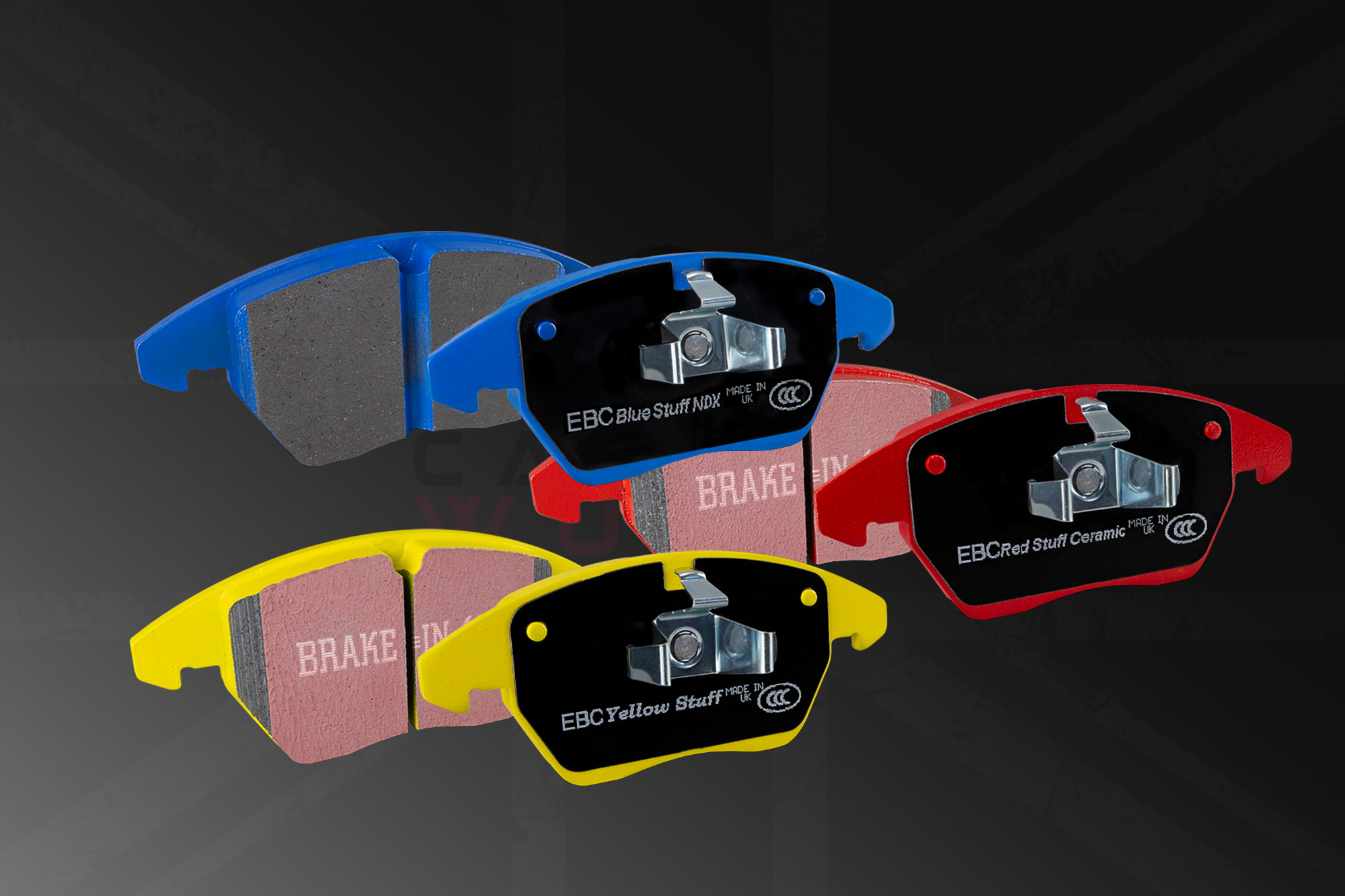
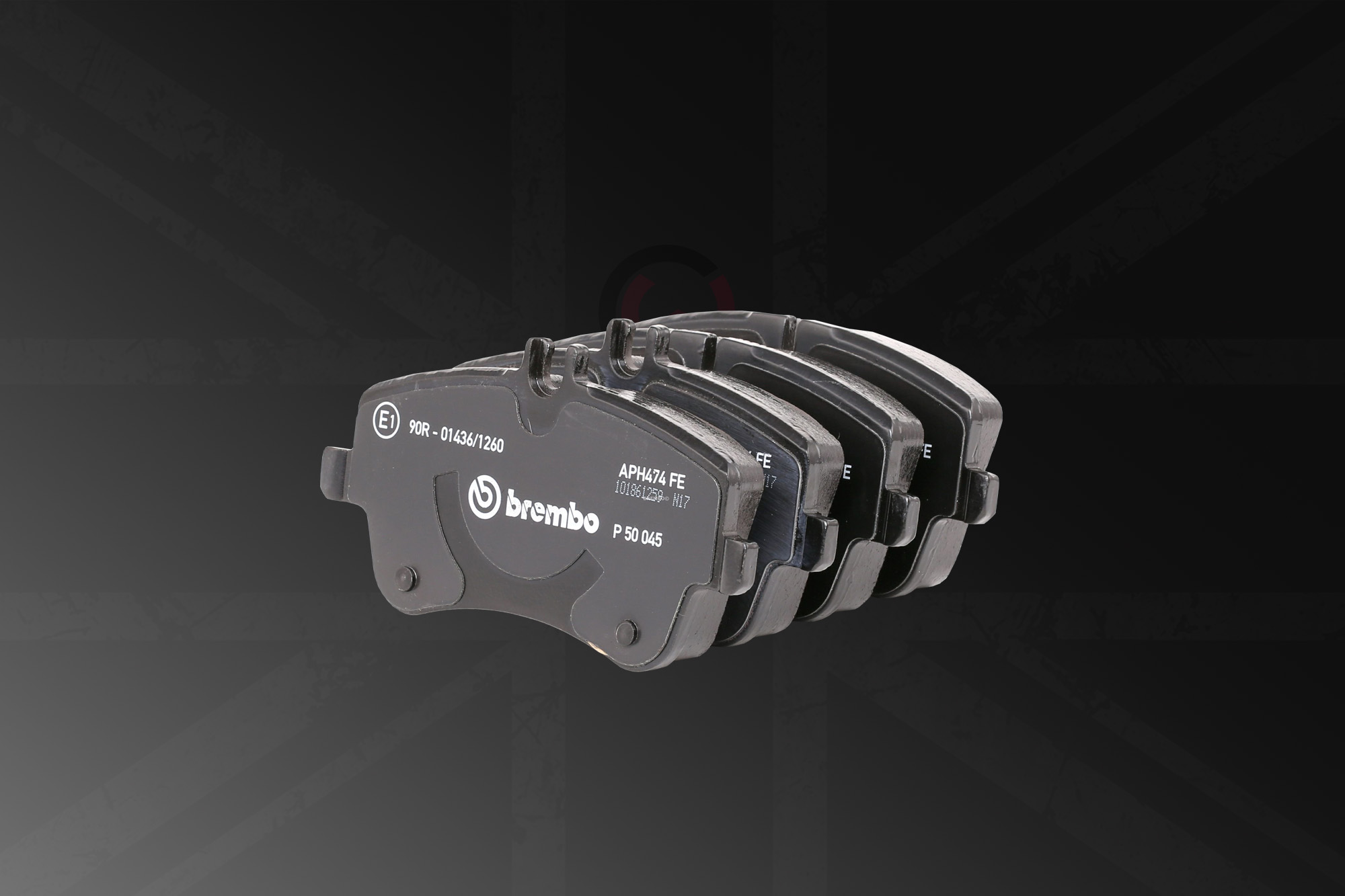
Whilst brake pads are available in a variety of shapes and sizes relative to the car and calipers in question, it is the material or compound from which they are made that dictates their performance and recommended use. Standard factory brake pads are engineered to satisfy a number of criteria including cost, dust emissions, noise and performance from cold. Whilst perfectly adequate for road use they often come up short during prolonged track use where generally they are overcome by heat at which point performance declines rapidly! Even high-performance sports models aren’t exempt from this issue, particularly if they have been tuned, which makes brake pads a logical place to start when considering performance upgrades and preparing for hard track use, significant power increases or both!
Different compounds, containing everything from semi-metallic, ceramic and organic materials, giving different braking characteristics. They are also susceptible to different operating temperatures and durability. That means finding the right one is dependent on not just the weight of the car, but also how you use it. Arguably the most important characteristic of any compound is its hardness. A soft compound will suit aggressive track driving but will quickly wear out, on the other hand, a hard compound will be more likely to succumb to fade under extreme use. It’s worth noting that for a road going track car brake pad will often be a compromise where more dedicated pads will often produce undesirable noise and sometimes lack performance until they reach operating temperature.
Our recommend brands for brake pad upgrades
Brake Lines
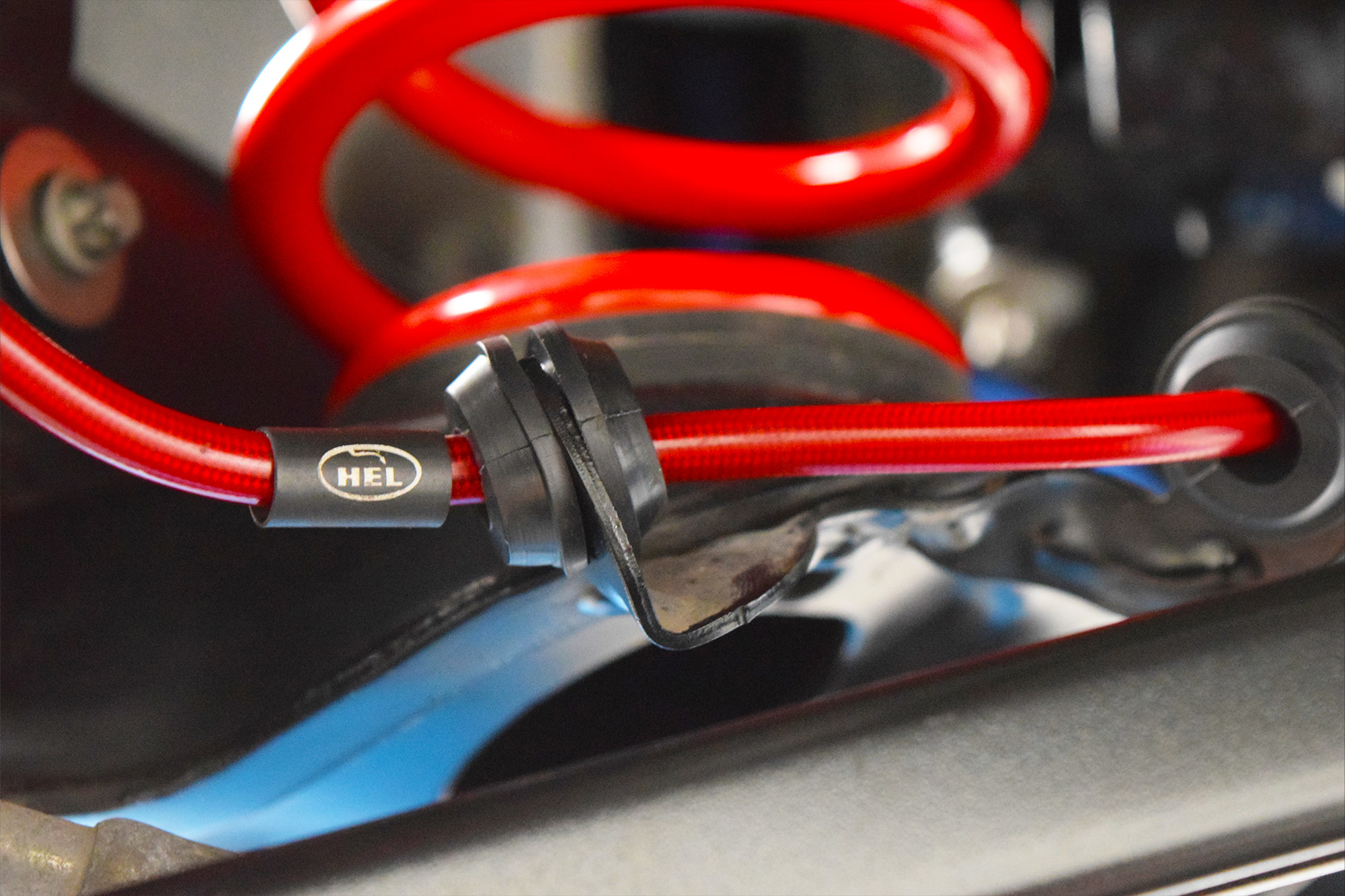
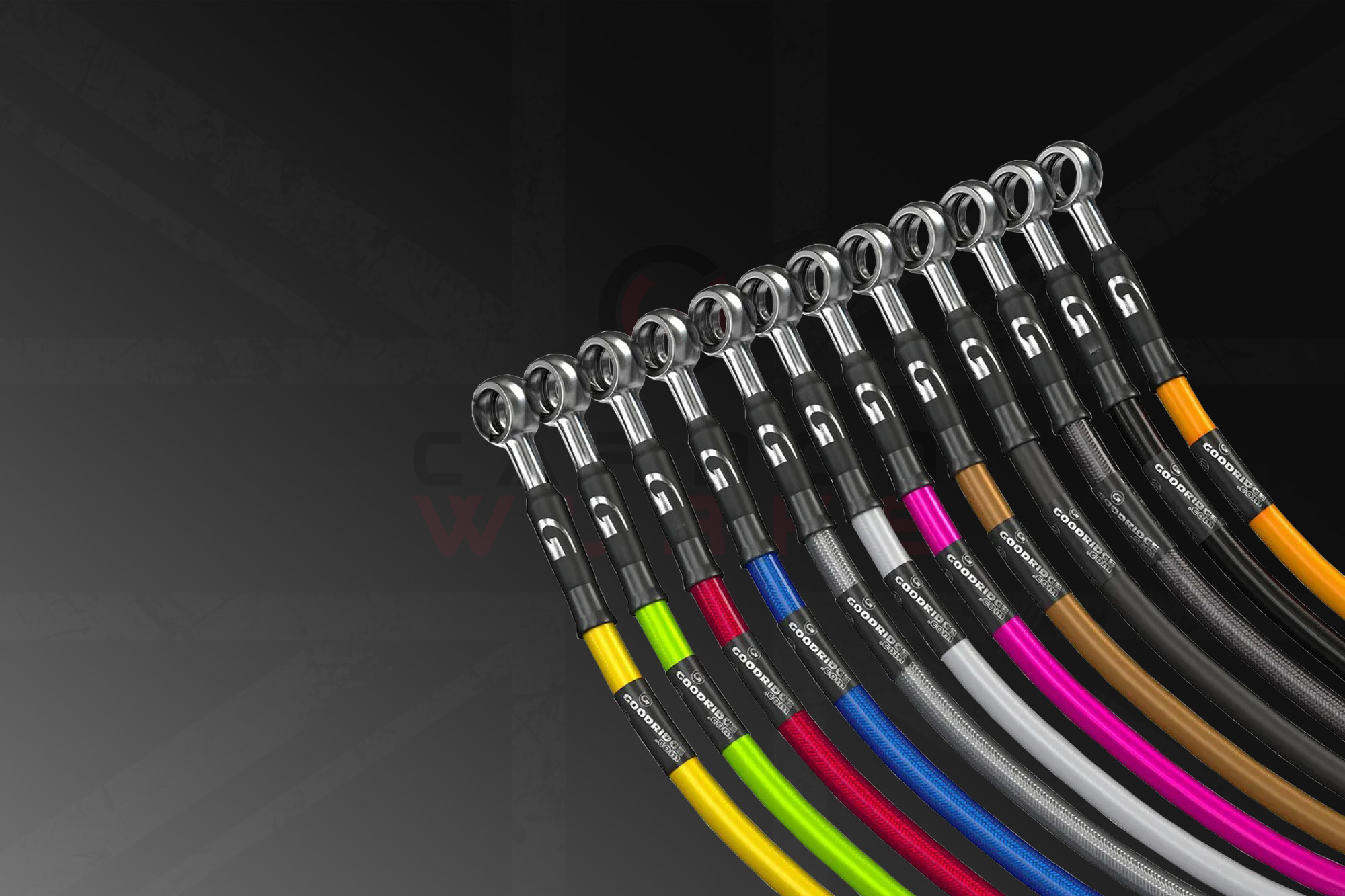
Another common and cost-effective upgrade to a vehicles braking system is the installation of high-performance brake hoses, typically referred to as braided brake lines. Brake hoses are the flexible connection between the main body of the car and the caliper at the wheel hub and are responsible for delivering brake pressure through the flow of brake fluid back and forth. Standard factory brake hoses are usually made of durable rubber materials which not only deteriorate and perish with age but also can bulge and flex under the immense braking pressures associated with track driving.
Whilst there are now a number of performance brake line manufacturers in the industry, they all follow a very similar design and manufacture process. The proven recipe is a high specification PTFE hose inside a braided stainless-steel outer, usually covered by a customisable protective plastic coating and connected by billet, corrosion proof fittings. As a result, a braided brake hose is far less susceptible to wear, and fatigue compared to its rubberised counterpart and boasts far more positive feedback through the pedal as well as near on zero pressure loss between the brake foot and caliper. Not only does this result in improved performance and reliability it also means far greater confidence in your brakes and car control. It’s worth noting that as well as off-the-shelve solutions, custom applications are easily catered for and braided hoses can also be used in clutch hydraulic systems as well as the solution to corroded hard pipes.
Our recommend brands for brake line upgrades
Brake Fluid
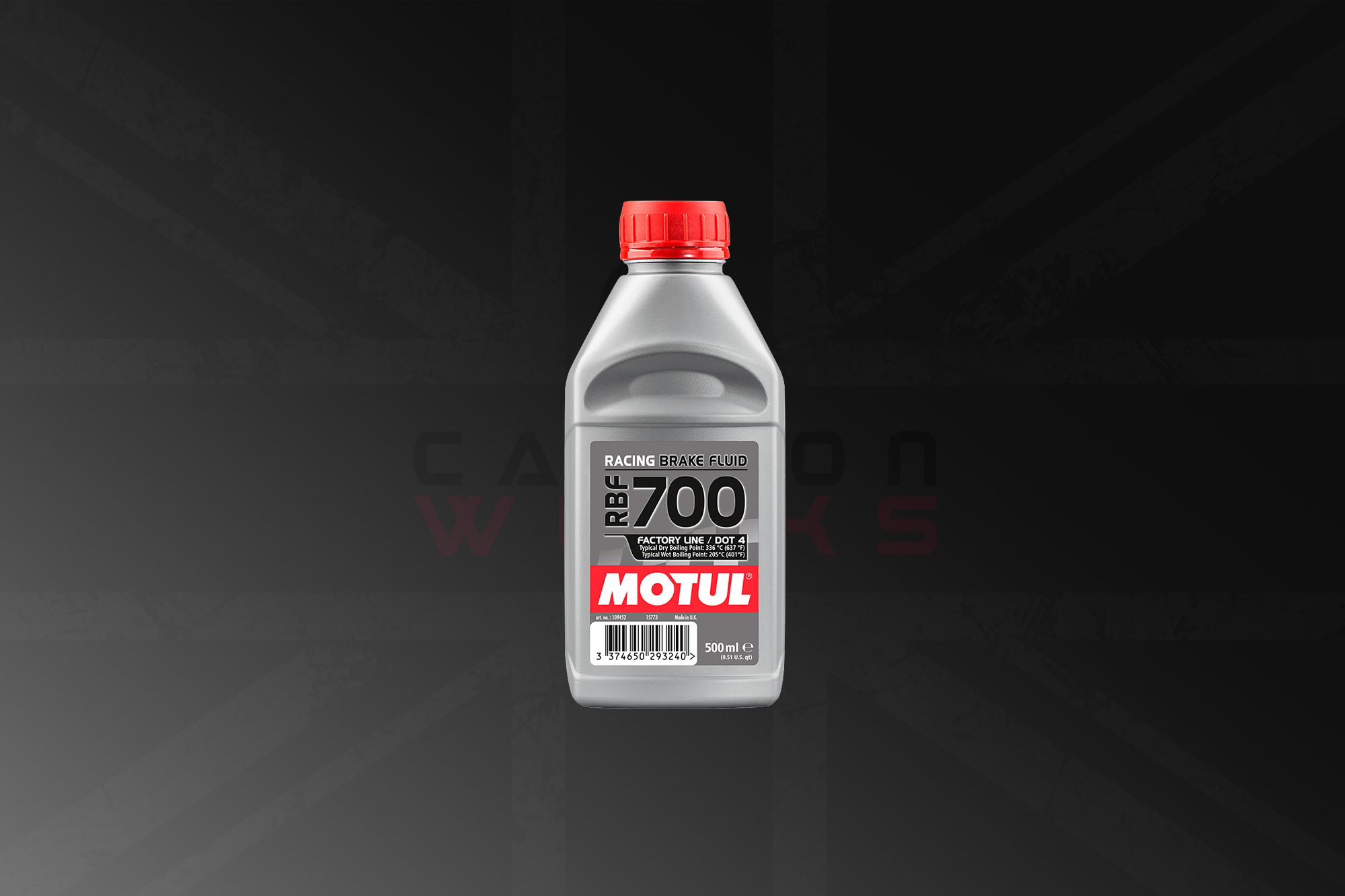
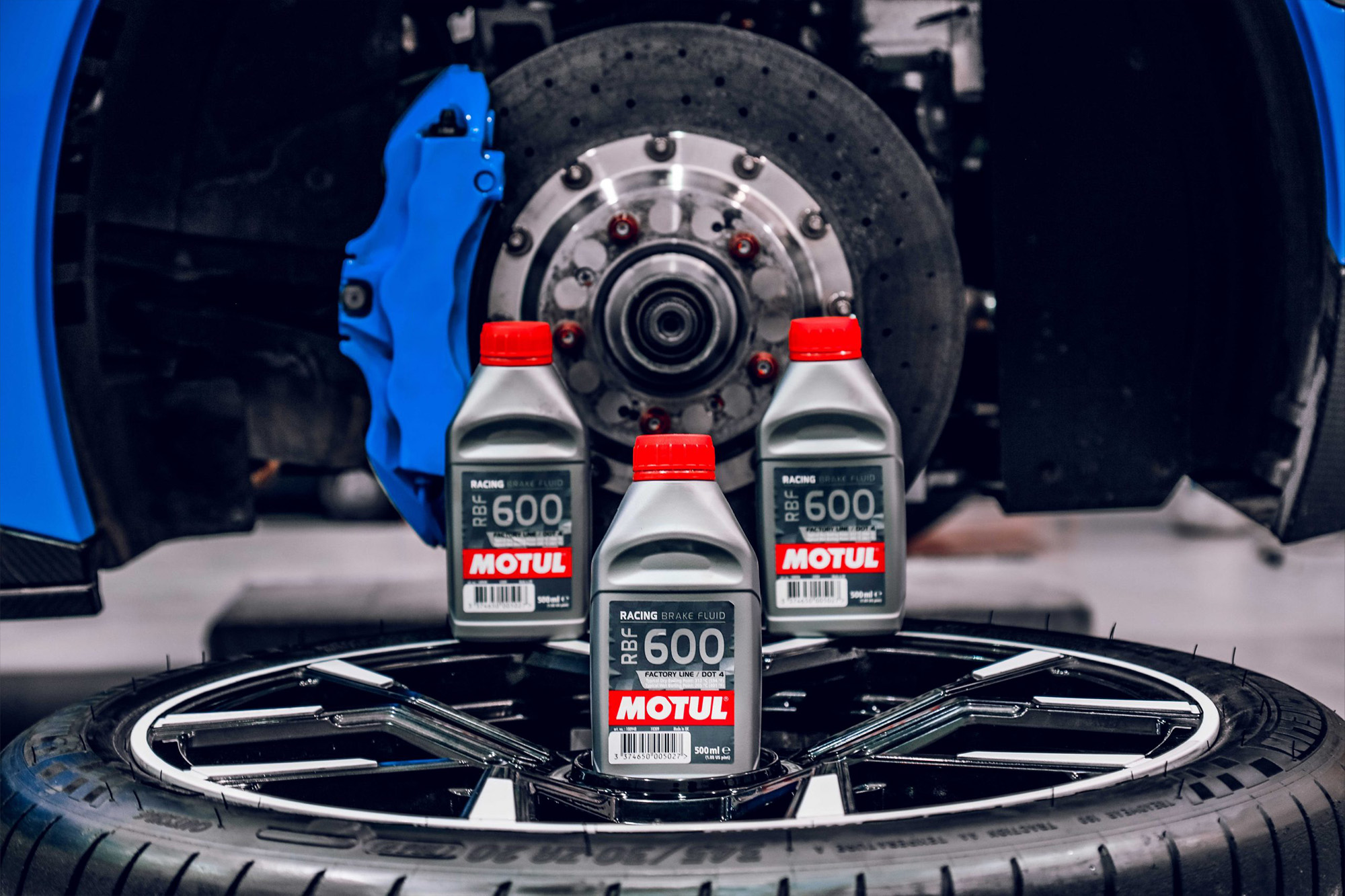
Responsible for bringing your car to a stop, brake fluid is arguably one of the most important fluids in any vehicle. Critical for your safety it is recommended to be replaced every 2 years as a minimum regardless of mileage, this is because it is a hygroscopic fluid meaning that it absorbs moisture which over time will reduce its performance. Any water in the braking system will reduce the boiling point of the fluid which is especially relevant to track or competition cars where braking temperatures are consistently much higher, increased moisture content risks a spongey feeling in the brake pedal, reducing braking performance and corrosion to any steel components within the hydraulic system such as caliper pistons.
Those of you familiar with brake fluid will no doubt be aware of its DOT rating system – the DOT number of a fluid denotes its boiling point and will help you identify a product suitable for your use. The boiling point is measured both dry (fresh, new fluid) and wet (exposed, 3.7% moisture) and the higher the boiling point, the higher the DOT rating – modern-day fluids have a DOT 4 rating which should be regarded as a minimum requirement but performance fluids are available up to the highest rating of DOT 5.1. It’s worth noting that DOT 5 exclusively rates silicone-based fluids which are an alternative to standard glycol-ether and whilst they do not have the water absorption properties of glycol-ether fluids their brake feel is not quite as sharp.
Those of you familiar with brake fluid will no doubt be aware of its DOT rating system – the DOT number of a fluid denotes its boiling point and will help you identify a product suitable for your use. The boiling point is measured both dry (fresh, new fluid) and wet (exposed, 3.7% moisture) and the higher the boiling point, the higher the DOT rating – modern-day fluids have a DOT 4 rating which should be regarded as a minimum requirement but performance fluids are available up to the highest rating of DOT 5.1. It’s worth noting that DOT 5 exclusively rates silicone-based fluids which are an alternative to standard glycol-ether and whilst they do not have the water absorption properties of glycol-ether fluids their brake feel is not quite as sharp.
Our recommend brands for brake fluid changes
Cooling / Thermal Plates
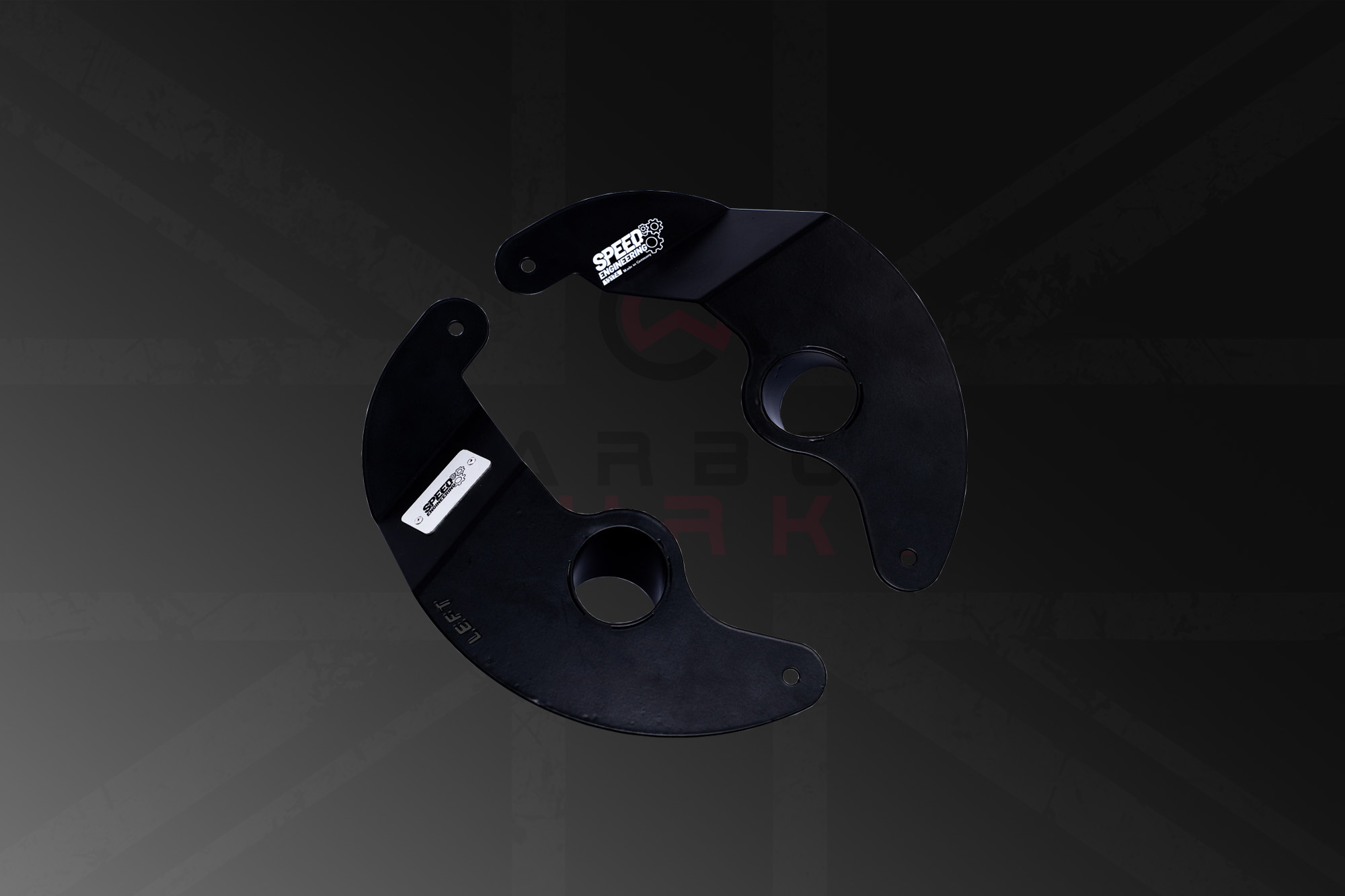

If, once you’ve optimised the rest of your braking system, you’re having difficulty keeping on top of temperatures then you’ll be considering brake cooling solutions. Much like many other performance upgrades, brake cooling filters down from race car design where several forward-facing ducts channelling oncoming cooling air directly from the front of the vehicle to the braking assembly, this draws heat away from the brake disc helping to maintain a more stable operating temperature and consistent braking performance. There are model specific solutions available for brake ducts but the important part of brake ducting is ensuring that it cools the disc as a whole rather than just one side and the best method of doing so is directing the cooling air to the rear of the brake bell (the centre) so it can be centrifugally forced outwards through the veins of the ventilated disc.
Brake pad shims can also be used to prevent the damaging effects of heat within the braking system – manufactured in a number of different materials, with titanium or carbon fibre typically being the most effective, they are positioned between the brake pad and the brake caliper. The purpose of these shims is to reduce heat transfer from the pads to the caliper and the brake fluid contained within it, they also provide an extra layer of protection to the piston seals and rubber dust boots of road use calipers which often succumb to the extremes of temperature in track use.






















